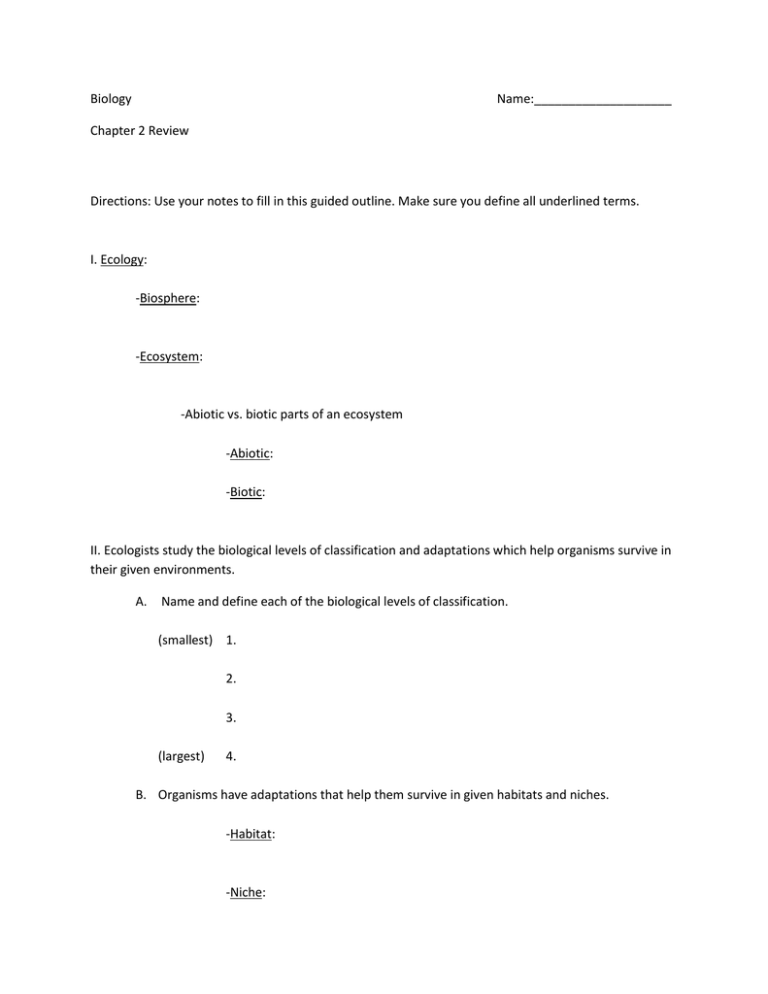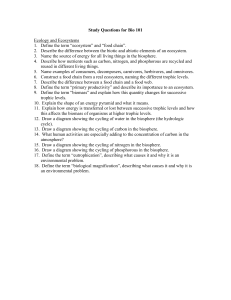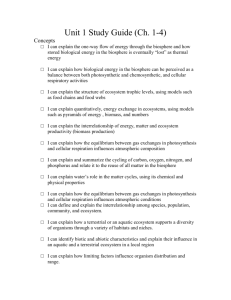16. Chapter 2 Test Review Outline
advertisement

Biology Name:____________________ Chapter 2 Review Directions: Use your notes to fill in this guided outline. Make sure you define all underlined terms. I. Ecology: -Biosphere: -Ecosystem: -Abiotic vs. biotic parts of an ecosystem -Abiotic: -Biotic: II. Ecologists study the biological levels of classification and adaptations which help organisms survive in their given environments. A. Name and define each of the biological levels of classification. (smallest) 1. 2. 3. (largest) 4. B. Organisms have adaptations that help them survive in given habitats and niches. -Habitat: -Niche: III. Symbiosis: A. Types of symbiosis: 1. Competition: -Example: -Name and define the 2 types of competition: 1. 2. 2. Predation: -Example: 3. Commensalism: -Example: 4. Mutualism: -Example: 5. Parasitism: Example: IV. Energy flow in ecosystems: -Autotroph: -Heterotroph: -Energy transfer in an ecosystem: -Food chain: -Food web: -Trophic level: -Questions you should be prepared for: 1. If there is a loss of energy in an ecosystem, what will happen to the number of organisms found at each trophic level? 2. If there is a loss of energy in an ecosystem, what will happen to the number of trophic levels found in the ecosystem? 3. About how much of the energy at each trophic level is available to the next trophic level? V. Define each of the following cycles that are important to the health of the ecosystem: A. The water cycle: -What process causes water to be lost from the biotic parts of the biosphere to the abiotic parts? (Make sure you define it!) B. The carbon cycle: -Carbon leaves the abiotic parts of the biosphere and enters the biotic parts of the biosphere through what process? (Make sure you define it!) C. The nitrogen cycle: -What converts atmospheric nitrogen into a form that can be used by plants? D. The phosphorus cycle:






